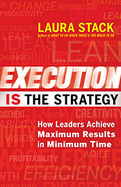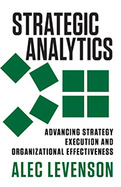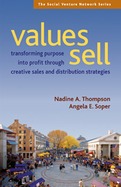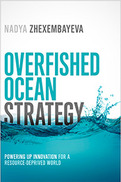Shows how strategy and tactics are part of the same overarching process, requiring greater flexibility and more rapid implementation than ever before.
- Shows how strategy and tactics are part of the same overarching process, requiring greater flexibility and more rapid implementation than ever before
- Reveals how to create agile and resilient organizations, where execution continually modifies and adjusts the strategy to fit current realities
- Includes the "Execution Quotient" leadership assessment and access to an online group reading guide and self-development resources
Once upon a time, executives would go to an off-site brainstorming session, come back with a multiyear strategic plan, and hand it off to their employees to dutifully execute. But in today's world of rapid, disruptive change, it's hard enough to come up with a five-month plan, let alone a five-year plan. As one executive interviewed by author Laura Stack put it, "You prepare a strategic plan and then put it on the shelf while the real world passes you by."
Nowadays, strategy can't be separate from execution-it has to emerge from execution. New technologies, sudden changes in global markets, and viral customer reactions to new products require quick, nimble responses-sometimes even a complete strategic 180. But if your organization isn't set up to be fast on its feet, you could easily go the way of Blockbuster or Borders.
Stack shows you how to make sure your organization is ready for on-the-spot strategic execution. Her LEAD formula explains how to Leverage the people and resources you need to create an agile organization, establish an Environment where your employees are confident and capable enough to take the initiative and make on-the-fly changes, ensure that your team is in Alignment with the organization's goals so they'll make the right strategic choices, and remove obstacles so they can Drive the organization forward quickly.
Of course, you'll still need to have a great strategy in place, but your goals must be subject to constant readjustment and revision. You have to work with your team to build effective business strategies in real time, not be bound by a plan that may be out of date as soon as it rolls off the printer. Execution really is the strategy that will propel your organization forward, and Laura Stack can help you build an organization ready to meet the challenge of constant change.
2015
The problem, Levenson says, is that the business people who devise the strategies and the human resources people who get employees to implement them use completely different analytics. Business analytics can determine if operational priorities aren't being achieved but can't explain why. HR analytics reveal potentially helpful policy and process improvements but can't identify which would have the greatest strategic impact.
This book shows how to use an integrated approach to bring these two pieces together. Levenson presents a thorough and realistic treatment of the reasons for and challenges of taking an integrated approach. He provides details on the different parts of both enterprise and human capital analytics that have to be conducted for integration to be successful and includes specific questions to ask, along with examples of applying integrated analytics to address particular organizational challenges.
Effective analytics is a team sport. Levenson's approach allows you to get the deepest insights by bringing people together from both the business and HR perspectives to assess what's going on and determine the right solution.
In The Stakeholder Strategy, sociologist Ann Svendsen presents an effective and practical step-by-step guide that companies can use to forge a network of powerful and profitable collaborative stakeholder relationships.
While some forward-thinking corporations have tried limited collaborative approaches-focusing on one stakeholder group at a time-few have taken a comprehensive and strategic approach to building relationships with all of their stakeholders, notes Svendsen. And, while considerable commitment to the idea of stakeholder collaboration exists, there is a lack of knowledge and understanding about how to develop these relationships. The Stakeholder Strategy is the first book to show business leaders and managers how to establish and maintain positive, mutually beneficial stakeholder relationships. Based on a synthesis of ideas from community relations, corporate philanthropy, stakeholder management, organizational change, sustainability, and the corporate social responsibility literature, it offers an integrated framework, as well as the practical tools for developing new kinds of collaborative relationships.
Svendsen uses easy-to-grasp concepts from everyday life, such as the process we go through in finding a mate or developing a long-term friendship, to illustrate these relationship-building strategies. She lays out the steps a company should take to create a collaboration-friendly organization: establishing a social mission, values, and ethical guidelines; assessing corporate readiness for collaboration; and making changes in communication, information and reward systems to support internal and external collaboration. Featuring case study examples from companies in North America and Europe who are working to build collaborative relationships with their stakeholders, The Stakeholder Strategy is the first book to provide a detailed explanation of how to conduct stakeholder audits and social audits so that companines can evaluate their relationship-building success and keep on track.
- Provides an integrated framework for understanding a corporations responsibilities to a broad array of stakeholders-from customers to suppliers, employees, and communities.
- Offers a step-by-step guide as well as practical strategies that companies can use to forge a network of powerful and profitable collaborative
- stakeholder relationships.
- Features case study examples of companies across North America and Europe that are building collaborative relationships with their stakeholders.
2007
- Presents practical, detailed advice for developing innovative sales and distribution strategies
- Features examples from companies such as Tom's of Maine, Seventh Generation, Honest Tea, and many others
Overfished Ocean Strategy offers five essential principles for innovating in this new reality. Zhexembayeva shows how businesses can find new opportunities in what were once considered useless by-products, discover resource-conserving efficiencies up and down their value chain, transfer their expertise from physical products to services, and develop ways to rapidly try out and refine these new business models. She fills the book with examples of companies that are already successfully navigating the overfished ocean, from established corporations such as BMW, Microsoft, and Puma to newcomers such as Lush, FLOOW2, and Sourcemap.
The linear, throwaway economy of today—in which we extract resources at one end, create products, and throw them away at the other—is rapidly coming to an end. In every industry, creative minds are learning how to make money by taking this line and turning it into a circle. Nadya Zhexembayeva shows how you can join them and avoid being left high and dry.



















